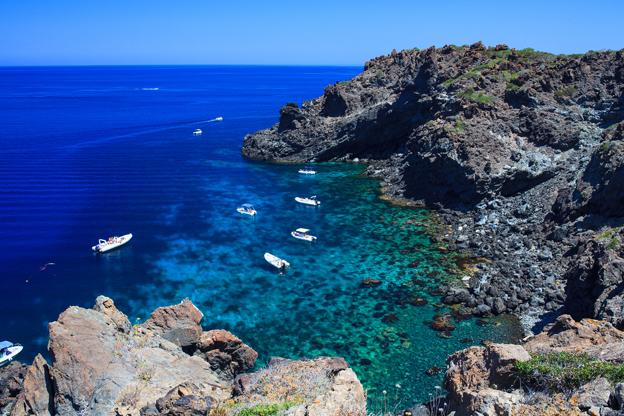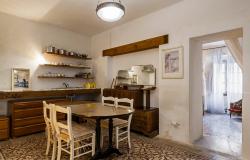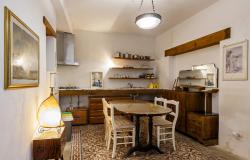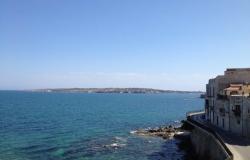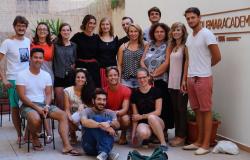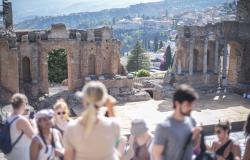Continuing with our articles documenting the islands around Italy, we have previously featured the Aegadian and Aeolian Islands, and this feature will look at the three remaining Sicilian islands.
Pantelleria
Often called the Black Pearl of the Mediterranean, the volcanic island of Pantelleria lies to the south of Sicily’s westernmost point - in fact, it’s 40 kilometres closer to Tunisia than Sicily. Its close proximity to Africa means that it’s often buffeted in Spring and Autumn by the scirocco and it’s this that earned it the nickname of Bint-al Rion (Daughter of the Wind), by the invading Arabs in the 8th century.
Pantelleria was once a huge volcano, which, over 600,000 years ago, erupted, creating a dramatic coastline and giving birth to 47 mini-volcanoes, some of which with naturally heated pools of fresh water reputed to be good for curing some skin ailments and rheumatism. Montagna Grande is the island’s largest volcano, attracting visitors who take the 836-metre trek to its summit, where, on a clear day, it is possible to see the North African coast. Sadly, due to the cooling magma beneath, the volcano is now suffering from periods of subsidence which are causing it to reduce in height.
To the north-eastern base of the volcano is Lo Specchio di Venere (Mirror of Venus), the island’s largest volcanic lake, where legend states that Venus admired her reflection in the clear water that is now home to a water sports centre and thermal baths.

[Photo: Lago Specchio di Venere]
Although Pantelleria has no beaches, it’s the sea that attracts its tourists and many venture out onto the rocks to enjoy the swimming and snorkelling. The imposing cliffs are peppered with grottos and inlets making exploration and circumnavigation of the island interesting. Possibly the most photographed coastal feature is a sea stack known as the Elephant, due to its shape resembling that of an elephant head with its trunk dipping into the sea.
Like most of the Mediterranean islands, Pantelleria has had a chequered history with dominant civilisations, including the Phoenicians and the Spanish coming and going over time, and each one leaving its mark. However, the greatest influences are Arabic and this can be clearly seen in the traditional houses called dammusi, the design of which dates back to the 10th century. Built from lava rock with distinctive domed roofs, the houses have walls thick enough to provide insulation in winter and a cool living space during the summer months.

[Photo: View of typical dammuso house]
The tourist accommodation is found in the main town, but, this said, it only amounts to a handful of hotels which tend to be booked up quickly, especially for the month of August. There are several restaurants, and like most islands, the specialty is freshly caught fish; there’s also the Arabic influence with dishes including cous cous and mint flavouring, such as the local specialty of ricotta and mint ravioli. With dinner you can sample the two very good local wines: a Moscato and a Passito, both of which are made from the Arab imported Zibibbo grape.
Getting There
By air: Meridiana flies 3 times per day from Trapani to Pantelleria and twice a day from Palermo to Pantelleria. For flight information and times, click here.
Alitalia flies direct from Milan Linate and Rome Fiumicino from June to September, for flight information and times, click here.
By sea: Siremar have daily overnight ferry sailings from Trapani for passengers with cars or the 90 minute hydrofoil crossing for foot passengers only. Crossings can be booked at the port or in advance by calling +39 0923 545455 or click here.
Ustica

Sitting in the Tyrrhenian Sea, 52 kilometres north of Palermo, is Ustica, a small island barely 9 kilometres across that attracts divers from all over the world. This turtle shaped volcanic island originally populated by the Phoenicians takes its name from the Latin ustum, meaning burnt, which refers to its blackened appearance.
Its close proximity to mainland Sicily makes it a popular daily jaunt for Sicilians from the north-east of the island wanting some peace and quiet, and being a volcanic outcrop, it is fertile meaning the uplands are perfect for rambling among the mastic trees and quiet contemplation. But it is the crystal clear waters and deep dive sites that attract the biggest proportion of visitors.
The island has an abundance of diving centres that cater for everyone, from the novice to the expert, who come to enjoy the vast array of marine life and corals. Popular dive sites like Scoglio del Medico and Grotta dei Gamberi can be crowded in the summer months, but smaller sites like Punta Cavazzi and Punta Falconiera are equally worthy of your dive time.
If you are thinking of diving off Ustica, and in particular visiting the protected sites of Punta Galera and Secca della Colombara, it’s worth remembering that under an ordinance by the Port Authorities of Palermo, protected sites can only be visited under the supervision of an accredited dive centre, so please make sure you check the centre’s credentials beforehand.
For younger people and the novice there are many grottoes that are safe and ideal for snorkelling, including Grotta delle Barche and Grotta Verde.

[Photo: Grotta Verde]
There’s also plenty of history on dry land to keep the tourists entertained. The houses in the town’s main piazza with their colourful painted murals entice photographers, while the prehistoric ruins at Faraglioni draw historians interested in the remnants of the village that dates back to the 14th century BC. The foundations of 300 stone built houses were discovered in 1989 and the defensive walls are thought to be the strongest fortifications in known Italian history.
Now home to 1,300 inhabitants, the island was once used as a penal colony and, during Italy’s Fascist years, Benito Mussolini banished thousands of political opponents and undesirables to Ustica. A portion of the former prison now houses the Museo Archeologico Case Carabozzello Fosso, which is another popular destination with the island’s visitors.
Getting there
Siremar has two 75-minute foot passenger sailings and one car ferry sailing per day and tickets can be purchased at the port or online through their website.
Ustica Lines have a weekly hovercraft connection from Naples during the summer; currently the 4-hour trip departs every Saturday during July and August.
Ferdinandea

Named after Ferdinand II, the sovereignty of our final Sicilian island remains in dispute with four nations claiming rights to it, however it’s not its ownership that makes it an unusual island, but the fact that it has through time appeared and disappeared above and below the sea.
This submerged volcanic island, which forms part of the Campi Flegrei del Mar di Sicilia, a field of submarine volcanoes 30 kilometres south of Sicily, last made an appearance on August 1, 1831.
Previous underwater eruptions have caused the island to become visible above the waterline, and it is erosion that has diminished it until it has sank beneath the waves again. The above sea level surface of the island is formed when lava pushed out of the volcano solidifies, increasing the height of the mount. Back in 1831, the island was said to have a circumference of 5 kilometres and be 65 metres high.
Volcanic activity in 2000 and 2002 led geologists to think it would reappear again, however to date it still remains 6 metres below sea level.
In case of further speculation as to the ownership of Ferdinandea (also known as Graham Island), divers in 2000 painted the Sicilian flag upon the summit so that, should it resurface, there would be no doubt.
Note: There are many other companies, besides the ones mentioned, offering passage to the islands and an Internet search will provide many results.
